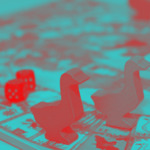4 Participation in an entertainment society
But I wonder: would an optimal e-participation project in YUTPA terms be enough to engage a broader public to policy deliberation? The ‘Breda-Morgen’ or the ‘De Amstel Verandert’ projects come close to this optimum. And your starting position is never as advantageous as in the internal cost-saving project.
From a designer’s perspective, I claim that many participation projects are inaccessible, little intuitive, text oriented, requiring a lot of knowledge or that they are immensely boring. Today’s society is also an entertainment society, where play and playfulness play an important role in human interactions. It is interesting to examine consumer participation in media, art & design and to redesign public participation in policy deliberation in a more playful way. I proposed this approach for the collaborative design of a city park.
Many participation projects are inaccessible, little intuitive, text-oriented, requiring a lot of knowledge or they are immensely boring.
Conclusion: Is civic participation needed? In my opinion, yes indeed, as a complement to the range of democratic means of today. Is e-participation the solution? Partly, I think: apply online Web 2.0 applications, but do not forget offline meeting. Can e-participation be better? Yes. E-participation can at least be made more accessible by applying game elements.
Trust is the basis of a good relationship. Trust between government and society is under pressure. That is an obstacle to a stable, healthy society. Participation is a powerful instrument for strengthening mutual confidence. My research offers new clues for a successful participatory process. Now, let’s act!



